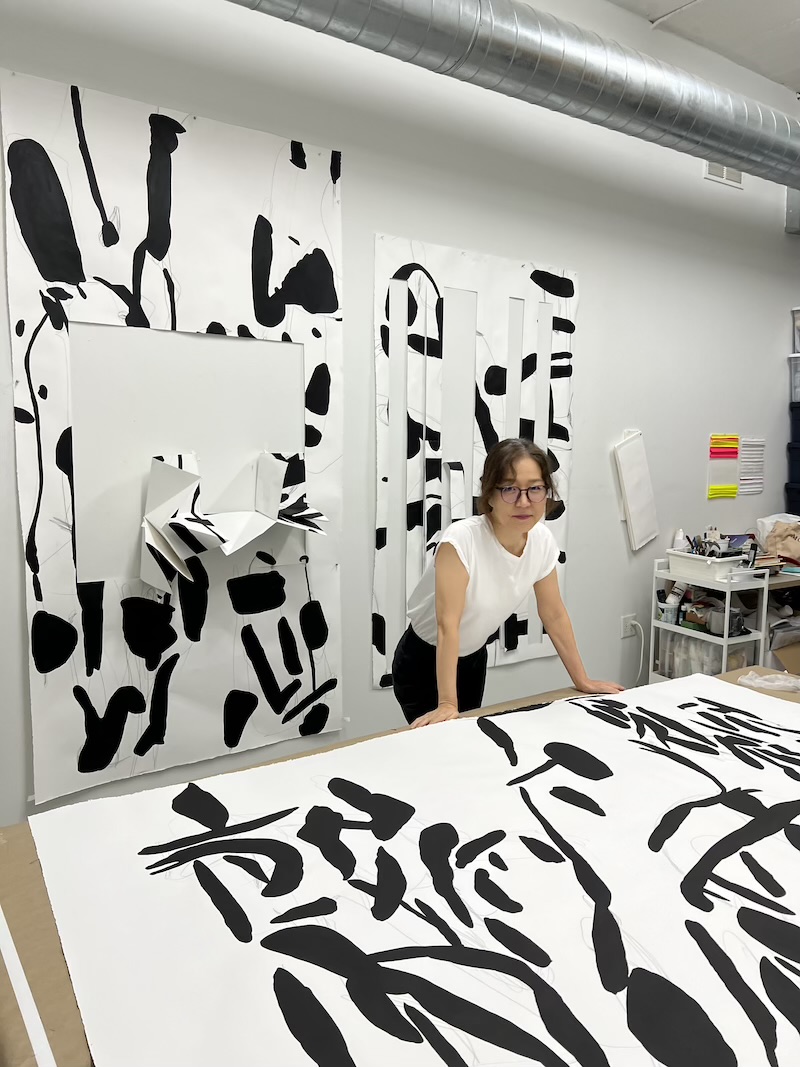Polish Sculptor and Agora Artist Magdalena Abakanowicz Has Died at 86

Information excerpted from Richard Gray Gallery's website:
Polish sculptor Magdalena Abakanowicz (born in 1930), an artist with a career spanning more than five decades, died yesterday in Warsaw.
In Chicago she is most known for Agora (2006), 106 upright figures, made of iron and each standing nine feet tall, permanently installed in Grant Park.
Abakanowicz told The Chicago Tribune in 2005, “Every sculpture can be turned into decoration. But if you have 100, you are confronted by them and must think and imagine and question yourself. This is what I want.”

Her first North American retrospective was organized at the Museum of Contemporary Art in Chicago in 1982. She has works in the museum's permanent collection.
Throughout her long and prolific career she has developed a distinctive sculptural language that is specific to her recollections of life in Communist-ruled Eastern Europe while remaining open to universal readings of human struggle. Her installations often portray crowds of headless or faceless bodies as somber testimonies to ongoing personal, societal, and international violence. Mutations brings together sculptures from the past thirty-five years in an installation that emphasizes the sculpture’s materials and symbolic impact.
Magdalena Abakanowicz was born in Falenty, Poland in 1930 and studied painting at the Warsaw Academy of Fine Arts. She was a foundational voice in the development of avant-garde sculpture beginning in the 1960s, particularly challenging the use of fiber as a sculptural material. By the 1970s, she had established herself as a presence in the global art community.

She is regarded as one of the most influential sculptors of the Post War period. Her powerful portrayal of the figure explores the human condition, the relationship between man and nature, and social and political histories pertaining to her experience in Soviet-occupied Poland.
Her earliest mature works—monumental, soft textile sculptures called Abakans that she completed when she was in her early thirties—won the artist international recognition in an era when very few Polish citizens were permitted to travel abroad. Since that time, Abakanowicz has become best known for her unique treatment of the human figure, often headless and modeled in found burlap or cast in bronze, representing our capacity to follow a leader or movement blindly, without thought. At the same time, she creates each form by hand, emphasizing the individuality that remains, even in the crowd.

Abakanowicz studied at the Academy of Fine Arts, Warsaw from 1950 – 1954. Her work can be found in public collections internationally including the Art Institute of Chicago; the Australian National Gallery of Art, Canberra; the Center for Contemporary Art, Warsaw; Centre Georges Pompidou, Paris; the Israel Museum, Jerusalem; the Kemper Museum of Contemporary Art, Kansas City, Missouri; the Ludwig Museum, Cologne; the Metropolitan Museum of Art, New York; the Musée d'Art Moderne de la Ville de Paris; the Museum of Contemporary Art, Chicago; the Museum of Modern Art, New York; the National Gallery of Art, Washington, D.C.; the National Museum of Contemporary Art, Seoul, South Korea; the Nasher Sculpture Center, Dallas; the Stedelijk Museum, Amsterdam; the Storm King Art Center, Mountainville, New York; the Sezon Museum of Art, Tokyo and many others.
Additional reading: richardgraygallery.com and nytimes.com
Top image: Magdalena Abakanowicz, Agora, 2006. Courtesy the artist and Richard Gray Gallery.
Editor's Picks
Related:






